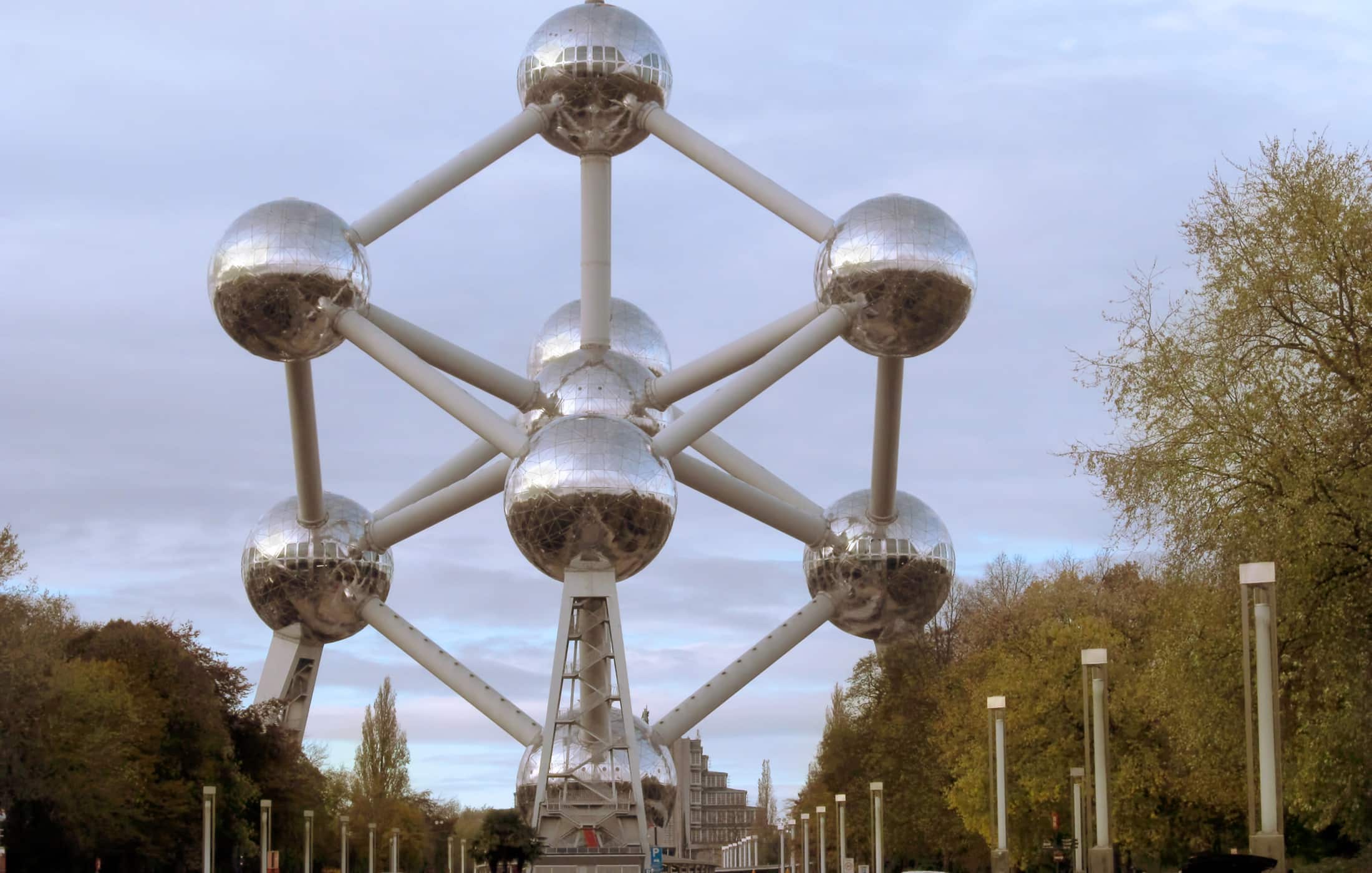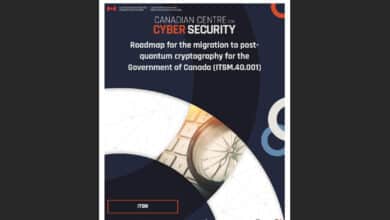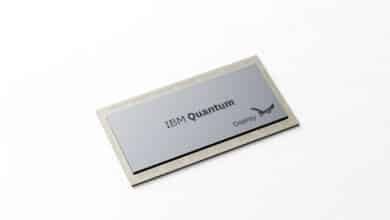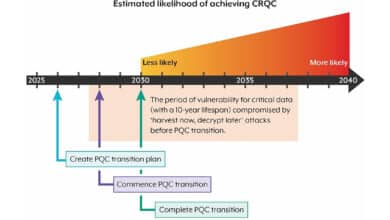Quantum Europe Strategy: Europe’s Five-Pillar Plan to Lead the Quantum Revolution

Table of Contents
On July 2, 2025, the European Commission unveiled the Quantum Europe Strategy – a comprehensive roadmap to transform Europe into a “quantum industrial powerhouse” and global leader in quantum technologies by 2030. This strategy arrives at a pivotal moment: quantum computing, communication, and sensing are advancing from lab experiments to real-world applications, promising breakthroughs from ultra-secure communications to revolutionary medical imaging.
Europe has long been a scientific trailblazer in quantum. As the strategy says “Europe is a quantum continent. From iconic forerunners such as Max Planck, Albert Einstein Niels Bohr, and Erwin Schrödinger, to current day pioneers and Nobel Prize laureates like Theodor Haensch, Albert Fert, Serge Haroche, Anton Zeilinger, Alain Aspect and Anne L’Huillier“, and boasts the world’s largest pool of quantum researchers and startups. However, EU leaders recognize that Europe has been “lagging behind in translating its innovation capabilities… into real market opportunities,” partly due to fragmented national efforts. Over €11 billion in public funds have been invested in European quantum R&D in the past five years, yet Europe trails competitors in patents and in scaling quantum startups to global players. The new Quantum Europe Strategy tackles these gaps head-on. It lays out a clear strategic vision – to foster a resilient, sovereign quantum ecosystem that turns Europe’s scientific excellence into market-ready innovations – and centers on five major pillars:
- Research and Innovation – consolidating Europe’s excellence in quantum science and driving it toward industrial use.
- Quantum Infrastructures – building cutting-edge computing, communication, and sensing platforms across Europe.
- Strengthening the Quantum Ecosystem – scaling startups, securing supply chains, and spurring industrialization.
- Space and Dual-Use Quantum Technologies – integrating quantum tech into space, security and defense applications for strategic autonomy.
- Quantum Skills – developing a world-class quantum workforce through education and talent initiatives.
Quantum Europe Strategy
At its core, the EU’s vision is to “turn Europe into a quantum powerhouse”, leveraging its world-class research base to achieve technological sovereignty. This means not only inventing quantum tech in European labs, but also producing and deploying it at scale across industries. The strategy explicitly notes that Europe’s scientific leadership must translate into industrial leadership. To get there, the EU will tackle fragmentation by aligning efforts across Member States and EU programs under a common agenda. In practical terms, the Commission plans to propose a “Quantum Act” in 2026 to cement a coordinated European framework for quantum R&D and deployment. In the interim, it will extend the mandate of the EuroHPC Joint Undertaking – originally for supercomputing – to cover all areas of quantum technology and act as a central hub orchestrating EU and national initiatives. This unified approach is designed to avoid duplication, pool resources on shared priorities, and “build critical mass” so that European innovations can scale up to global impact.
The strategy also emphasizes Europe’s commitment to strategic autonomy in quantum. Quantum tech has a strong dual-use dimension – it can revolutionize civilian sectors like healthcare or finance, and empower defense and security (through ultra-secure communication, sensors for navigation or detecting stealth threats, etc.) The EU has labeled quantum a critical technology for economic security and defense readiness. Thus, the vision isn’t just about economics; it’s also about ensuring Europe controls its own destiny in a future where quantum capabilities could confer huge strategic advantages (or vulnerabilities if left behind). With that big-picture mission in mind, let’s dive into the five pillars of the strategy.
Pillar 1: Research and Innovation – “From Lab to Fab to Market”
Europe’s first pillar centers on Research & Innovation (R&I) – fortifying the scientific foundation and accelerating the journey from lab breakthroughs to industrial products. European academia has led many quantum discoveries, but the challenge is to better coordinate and focus these efforts for maximum impact. Under the strategy, a new Quantum Europe Research & Innovation Initiative will align EU and national research programs around a common roadmap. Instead of disparate projects across countries, Europe will set shared R&I priorities and targets – for example, focusing on key enabling technologies and addressing cross-cutting scientific challenges that currently limit progress.
Crucially, the R&I pillar also includes investing in talent and skills (feeding into Pillar 5) so that Europe has the human capital to sustain a quantum industry.
To implement this pillar, the EU will use an EU-level governance framework (to be formalized by the upcoming Quantum Act). In the meantime, the existing EuroHPC Joint Undertaking will be amended by late 2025 to take on coordination of all quantum R&I, linking efforts funded by Horizon Europe, Digital Europe, national programs, etc., under one roof. For example, many of the EU’s current Horizon Europe quantum research projects (previously scattered across themes) will be folded into EuroHPC’s remit. This move should enable “seamless coordination” across research funding streams.
Pillar 2: Quantum Infrastructures – Building the Backbone (Computers, Networks, Sensors)
The second pillar focuses on deploying world-class Quantum Infrastructures across Europe – essentially, the tangible platforms and facilities that will underpin a quantum-powered economy. This spans quantum computing installations, quantum communication networks, and advanced quantum sensing systems. The EU is already investing heavily here: for instance, through EuroHPC it is co-funding quantum computing sites; through the EuroQCI program it’s building a secure quantum communication network; and via the Chips Act it’s funding pilot production lines for quantum chips. These publicly funded infrastructures are “strategic enablers” – they provide access to expensive, cutting-edge quantum tech that most companies or researchers could not develop alone. By sharing resources, Europe can accelerate innovation, train talent on real systems, and ensure broad access to quantum capabilities.
Three key infrastructure domains are highlighted as Quantum Computing Infrastructure, Quantum Communication Infrastructure (EuroQCI), and Quantum Sensing Infrastructure.
It explicitly calls out sustaining investments through 2035 in quantum computing facilities, communication networks, and sensing platforms. By making these resources widely available, Europe not only drives innovation but also lowers the barrier for startups and SMEs to develop quantum-based products (since they can access top-notch infrastructure as a service, rather than needing their own). In summary, Pillar 2 is about building the hardware backbone and facilities necessary for Europe to develop, test, and apply quantum tech at scale – from supercomputers to secure nets to sensor arrays.
Pillar 3: Strengthening the Quantum Ecosystem – From Startups to Scaleups
Technology leadership isn’t just about labs and infrastructure – it’s about the ecosystem of companies and investors that turn ideas into products. Pillar 3 addresses this by aiming to grow a vibrant EU quantum industry, with strong startups, scale-up funding, supply chains, and a healthy market for quantum products.
Today, Europe’s quantum ecosystem is energetic but fragile. There are on the order of 70+ quantum startups and scaleups in the EU (one of the largest concentrations globally), working on everything from quantum software to specialized hardware. However, most are small deep-tech companies facing steep challenges: limited private capital (especially for later growth stages), a shortage of large domestic customers, and competition from better-resourced ecosystems abroad. In fact, Europe attracts only ~5% of global private quantum investment, with over 50% going to US firms. This funding gap makes European startups vulnerable to being acquired by foreign players or relocating to the US or Asia for better funding. Furthermore, Europe lacks “anchor” quantum giants – there is no European IBM or Google in quantum computing yet – nor many big corporations buying quantum solutions, which means startups struggle to find early markets.
The Quantum Europe Strategy squarely acknowledges these issues and proposes a host of measures to scale up the ecosystem. Key actions include: Open Quantum Testbeds, Quantum Competence Centers, Intellectual Property (IP) Protection, Public Procurement as a Lead Market, Corporate-Startup Partnerships, Financing and Scale-Up Investment, “Lab-to-Fab” Industrialization Projects.
Pillar 3 is about nurturing a healthy quantum innovation ecosystem, where a startup can develop a product in a supportive environment – with access to top labs (testbeds), collaborative networks (clusters), sufficient funding, protection from predatory buyouts, and a ready market (via public procurement and corporate partners). If it succeeds, Europe could see the rise of homegrown quantum champions that not only rival foreign competitors but also anchor a supply chain entirely within Europe (key for economic security). The Commission’s candid admission that “we have to now focus more on private funding because we are very strong already in public funding” sums it up: the science is there; now the business side needs bolstering.
Pillar 4: Space and Dual-Use Quantum Technologies – Securing Europe’s Strategic Autonomy
One of the most distinctive aspects of the EU’s quantum strategy is Pillar 4, which integrates Space and Security/Defence dimensions. Unlike some past tech initiatives that stayed civilian, here the EU explicitly addresses quantum’s dual-use nature – its ability to serve both civilian purposes and military/national security needs. The message is clear: Europe intends to harness quantum for strategic advantage, while ensuring it doesn’t fall behind others (or become dependent on others) in critical areas like defense. Pillar 4 underscores that quantum technology is not just about economic innovation, but also about sovereignty and security. By proactively integrating quantum into these domains, the EU aims to “reinforce Europe’s strategic autonomy” in an era where information and technology superiority could be decisive.
Pillar 5: Quantum Skills – Developing Europe’s Quantum Workforce
The best technology strategy can falter without people to implement it. The fifth pillar addresses the human factor: building a skilled, diverse, and large quantum workforce in Europe. Fortunately, Europe starts from a solid base – it currently produces a huge number of STEM graduates. In fact, the EU has the world’s highest number of graduates in fields relevant to quantum (physics, computer science, engineering) relative to its population, with over 110,000 graduates in these fields each year. Europe also boasts more than 40 specialized Master’s programs in quantum technologies and engineering, thanks in part to initiatives like the Quantum Flagship’s education efforts. This indicates a strong academic pipeline.
However, the strategy acknowledges that this is still not enough. The demand for quantum-proficient workers is expected to explode as startups and industry projects grow, and already companies report major shortages of people with practical quantum skills. The most acute gaps are in applied and engineering roles – e.g. quantum software developers, quantum hardware systems engineers, technicians who can operate quantum labs, and even quantum-security experts. Europe’s talent pool, while large at the PhD level, isn’t fully aligned with industry needs; many graduates have strong theoretical physics backgrounds but industry needs a mix of engineering and software expertise. Moreover, there is a concern about brain drain – top researchers leaving for higher salaries or better opportunities abroad, and about diversity (quantum tech, like much of STEM, has gender and inclusion gaps).
To tackle this, the strategy rolls out a comprehensive plan for quantum education, training, and talent attraction.
Roadmap and Governance: How the Strategy Will Be Implemented
The Quantum Europe Strategy not only sets goals but outlines how they will be achieved, through a combination of timeline targets (roadmap) and a new governance structure.
The strategy includes concrete milestones spanning the next decade. Some key targets mentioned include:
- 2025: Achieve Europe’s first quantum-accelerated supercomputer (done – hybrid systems operational); Launch the EuroQCI’s first QKD satellite (Eagle‑1) in 2026; Begin European Q-MRI pilot network in hospitals; Amend EuroHPC JU to cover quantum (Q3 2025).
- 2026: Establish the Quantum Skills Academy; Quantum Act legislative proposal comes out; Publish Quantum Chips Industrialisation Roadmap and Quantum Standards Roadmap; Develop Quantum Sensing/Space/Defence roadmap; Launch “spin-in” dual-use initiatives connecting civil & defense quantum actors.
- 2025–2030: Deploy cross-border quantum communication links between all Member States and integrate terrestrial and satellite QCI networks; Expand the number and capacity of EuroHPC quantum computers steadily; Scale up the Q-MRI infrastructure to more countries; Operate six quantum pilot production lines for chips and validate processes by ~2028; Transform Flagship labs into the open testbeds network by 2030.
- By 2030: Reach ~100 error-corrected qubits in EU quantum computers (entering the realm of quantum advantage for useful tasks); possibly establish the first European quantum foundry (manufacturing facility) around this time; have a federated Quantum Internet prototype connecting sensors, computers, and users Europe-wide.
- 2030–2035: Aim for “thousands of error-corrected qubits” in European quantum computers, which would likely outperform classical supercomputers on important problems; possibly launch a full-scale quantum gravimetry satellite/network after pathfinders; by 2035, Europe wants to be “the first continent” to reach that scale of quantum computing and thereby solidify a global leadership position.
- Ongoing to 2035: Continuously grow the ecosystem (the strategy is somewhat open-ended here but envisions a self-sustaining quantum industry by the mid-2030s, where European quantum firms are mature and globally competitive).
These milestones illustrate a phased approach: immediate actions by 2025 (governance setup, pilot projects), scaling and integration by 2030 (infrastructure and industry coming into place), and global leadership by 2035 (technological edge achieved). The roadmap is ambitious but gives Europe a clear timeline to measure progress. It also aligns with broader EU plans like the Digital Decade and defense modernization timelines (2030 seems to be a focal year for many targets).
Implementing such a broad strategy requires coordination across many stakeholders – EU institutions, Member State governments, academia, industry, etc. The strategy proposes a “strong and inclusive governance at EU level” with structures to steer and monitor the progress. The governance model sets up two main pillars of oversight: one driven by scientific/technical expertise (the high-level board) and one by political coordination (the Member States group), with the Commission bridging them. This dual approach should help balance visionary thinking with practical implementation across Europe. It’s also a signal that the EU is treating this akin to a “Moonshot” – requiring top-level guidance and unity (similar, say, to how Airbus was coordinated across countries, or how CERN is governed by international partnership).
To actually implement the strategy, various funding and policy tools will be used.
Overall, the governance and implementation plan is quite robust and reflects lessons learned from past EU initiatives (like the need for high-level guidance and Member State buy-in). If executed well, it will ensure that the lofty goals are translated into on-the-ground projects, funded and coordinated efficiently.
Analysis
The Quantum Europe Strategy is an ambitious and comprehensive plan, marking the EU’s most concerted effort yet to assert leadership in a critical emerging technology. Several aspects stand out as particularly strong:
- Holistic, Coordinated Approach: One of the strategy’s greatest strengths is its emphasis on coordination and integration. The EU clearly learned from the fragmentation of past efforts – this plan aligns everything (research, infrastructure, industry, skills, defense) under one umbrella with common goals. The governance setup is well thought-out to keep everyone moving in the same direction.
- Comprehensive Scope (End-to-End Strategy): The five pillars collectively cover the full value chain and enabling environment for quantum tech. Europe is not just funding research and hoping for the best; it’s simultaneously building fabs, networks, companies, and training people. This end-to-end approach greatly improves the chances that breakthroughs will make it into real use.
- Public-Private Synergy & Early Infrastructure Lead: The strategy smartly leverages Europe’s strength in public investment and infrastructure to jumpstart the field. Initiatives like the hybrid supercomputers and EuroQCI show Europe can achieve first-of-a-kind milestones through collaborative funding. By continuing to fund open, shared infrastructure (supercomputers, testbeds, etc.), the EU not only accelerates R&D but also lowers the barrier for private companies to innovate (since they can use these resources). This could help European startups outperform foreign rivals that might not have such easy access to state-of-the-art facilities. The strategy’s provision to publish a Quantum Standards Roadmap in 2026 and to have testing/certification facilities for QKD also shows forethought.
- Dual-Use and Strategic Autonomy Focus: The integration of space and defense uses is a standout feature that gives Europe a realistic path to significant funding and deployment. Often, cutting-edge technologies find their first real applications in defense (the internet and GPS being prime examples). I think this is a strategic masterstroke – it both protects Europe and potentially accelerates innovation (defense projects can move fast and be very goal-driven).
- Emphasis on Industrialization and Market Creation: We also applaud the measures targeting the infamous “valley of death” in deep tech innovation. The strategy doesn’t assume that cool tech will magically find a market – it actively creates bridges through procurement, pilot programs, and corporate challenges. This is a notable shift in mindset for Europe, which historically has excelled in research but not always in commercialization.
Despite these strengths, it’s important to consider constructive critiques of the strategy. After all, a plan is only as good as its implementation and context. A few potential challenges and areas where Europe could do more stand out:
- Is the Funding Sufficient and Well-Sourced? While the strategy outlines many initiatives, one can question whether the scale of funding is enough to fulfill the lofty ambitions. The strategy itself does not announce a giant new EU-budget allocation for quantum, but rather repurposes and coordinates existing ones. The total dedicated EU-level funding for quantum in 2021–2027 is significant – in the low billions – and Member States add a few more billion. However, compare this to competitor moves: the US recently passed the CHIPS and Science Act which includes quantum R&D funding in the order of magnitude of a billion dollars, and U.S. tech companies themselves (Google, IBM, Amazon, Microsoft) have poured enormous private investments. China’s government is notoriously investing heavily (reports of a $10B national quantum lab) and likely more under its military programs. Europe’s €11B public funding over 5 years is notable, but that figure includes existing spending; going forward, new funds might need to increase for Europe to truly lead. The strategy leans on attracting private investment to Europe, which is wise but not guaranteed – getting VCs to invest in hardware in Europe is historically tough. The 5% global private investment share for Europe is a glaring weakness that the strategy addresses in words, but will the actions move the needle enough? It may require more bold steps, like creating a Europe-wide Quantum Venture Fund with public-private capital in the scale of >€1B, or incentivizing pension funds to invest in deep-tech. Without significantly more risk capital, European startups could still be tempted by American investors who often ask them to relocate. In short, the funding gap is acknowledged but not fully closed by this strategy.
- Speed and Agility vs. Bureaucracy: The strategy must be executed nimbly to succeed in a fast-moving field. However, by nature it involves EU bureaucracy and consensus-building, which can be slow. I worked for two years in the European Commission as a Scientific Officer and a Project Manager – some of the most frustrating period in my career. An agility concern I would have is making sure the new governance doesn’t become an overbearing committee that slows down researchers or entrepreneurs with red tape. Europe’s past large R&D programs sometimes got bogged down in paperwork; the quantum field’s timeline demands more startup-like agility in execution. The strategy would benefit from clear statements on simplifying processes, perhaps fast-tracking grant approvals for quantum projects or flexible funding mechanisms (the EIC’s faster processes are a good sign in this regard). Essentially, will the implementation be as dynamic as the tech requires?
- Industrialisation Uncertainties: Europe is staking a claim on building quantum hardware (chips, sensors, etc.) domestically, but this is a tall order. The pilot lines are a first step, but to actually produce competitive quantum processors at scale by 2030, Europe will need to marshal not just money but also talent and industry players. Right now, many quantum hardware startups in Europe still rely on global supply chains (for example, importing certain components or equipment from the US or Japan). Creating an end-to-end supply chain in Europe – from the specialized lasers to cryostats to control electronics – may require further policy support, such as incentivizing companies to manufacture those enabling technologies in Europe. The strategy does talk about securing supply chains and avoiding export control issues, but concrete measures will need to follow. There’s also the question of market readiness: even if Europe builds quantum foundries, will there be enough demand to keep them afloat by 2030? The industrialization push is bold and necessary, but it’s fraught with execution risk – strong public-private partnerships and perhaps flagship projects (like a pan-European consortium to build a “QuantumEU” computer akin to Airbus in aviation) might be needed to pull it off.
- Competitive Landscape and Ambition Level: The strategy is optimistic that Europe can lead by 2030. However, one could argue that some targets are not aggressive enough relative to competitors. For example, aiming for 100 error-corrected qubits by 2030 is ambitious technically, but companies like IBM have non-error-corrected quantum processors with over 400 physical qubits already (targeting 1000+ qubits within a year or two). By 2030, IBM and others might have perhaps tens of error-corrected logical qubits (depending on progress). Europe’s goal of thousands of logical qubits by 2035 is similarly bold, but what if competitors reach that earlier? Europe might then be a fast follower rather than a leader in hardware. Of course, quality matters more than raw numbers (error-corrected qubits are what count, and no one has any yet). The broader point is that the global competition is fierce, and Europe’s strategy might need even more firepower and urgency to outpace others. We may need to see mid-term adjustments: if by 2027 it’s clear that, say, a particular quantum computing approach is winning globally, the EU should be ready to double-down support for its players in that area to stay in the race. Flexibility to reallocate resources to the most promising paths (and to cut ones that lag) will be important – yet government programs often find that hard due to political commitments.
- Talent Retention and Attraction: Another challenge is actually retaining the talent the strategy plans to train. Europe can produce thousands of quantum PhDs, but if the best and brightest feel better opportunities lie in Silicon Valley or Shenzhen, they may leave. The strategy’s fellowships and mobility programs are great, but Europe might also consider things like startup visas, competitive compensation, and research freedom to keep talent. Academic salaries in Europe are generally lower than in the US; industry salaries too can lag. If quantum experts are in global demand, Europe may need to foster an environment (including social factors like quality of life, research funding per researcher, etc.) that makes them want to stay. The good news is that the EU recognizes the issue (hence the fellowship to bring non-EU talent in, and talk of attracting global talent under the Union of Skills). But this might need scaling up – e.g., perhaps an “EU Quantum Visa” or tax breaks for highly skilled personnel in quantum fields.
- Private Sector Buy-in: The strategy’s success hinges on European industry embracing quantum – both established companies as adopters and investors, and new quantum companies flourishing. While there are positive signs (many European corporates are at least exploring quantum for R&D), there’s still a cultural and awareness gap. Some European companies may be hesitant to invest in what might seem like a far-off technology. Europe could “do more” by perhaps creating incentives for private R&D in quantum (like tax credits for companies that invest in quantum research, similar to what some countries do for R&D in general). Also, encouraging more cross-border industry consortia (like how in microelectronics, European firms sometimes banded together in projects) could help share risk and knowledge in adopting quantum solutions.
- Where’s Quantum Software: While the strategy champions hardware and infrastructure (quantum computers, networks, chips), it significantly underplays quantum software and algorithm R&D – a gap that leaves European quantum platforms underutilized. To correct this, the EU should invest in a dedicated quantum software program or roadmap – for example, funding quantum-specific software frameworks and establishing a European Quantum Software Consortium – to foster a homegrown software ecosystem. Without such indigenous software capacity, Europe’s ambition for end-to-end quantum sovereignty is at risk, as even domestic quantum machines would rely on foreign codebases and intellectual property
In conclusion, the EU’s Quantum Europe Strategy is a bold and much-needed blueprint at a critical moment for quantum technologies. It sends a strong signal that Europe is not content to be a mere player – it wants to lead in the quantum revolution. The strategy’s five pillars hit all the right notes: investing in research, building infrastructure, empowering startups, leveraging space/defense, and educating talent. If executed well, these actions will reinforce each other and could catapult Europe into a position of strength: imagine by the early 2030s, Europe hosting some of the world’s most powerful quantum computers, running on European components, connected by a European quantum internet, used by European industries and protected by quantum-secure networks – that is the vision this document outlines.
Yet, achieving this vision will require persistent political will and perhaps even greater ambition in the face of global competition. Europe “could and should do more” in terms of mobilizing resources quickly and fostering the right environment, because the opportunity and stakes are enormous. Quantum technology has been dubbed “the next trailblazing innovation… opening new opportunities for industrial competitiveness and technological sovereignty”. In other words, it’s a race one doesn’t want to lose. With this strategy, the EU has made a strong start – it now must follow through with concrete investments, partnerships, and perhaps a willingness to take some risks.
Quantum Upside & Quantum Risk - Handled
My company - Applied Quantum - helps governments, enterprises, and investors prepare for both the upside and the risk of quantum technologies. We deliver concise board and investor briefings; demystify quantum computing, sensing, and communications; craft national and corporate strategies to capture advantage; and turn plans into delivery. We help you mitigate the cquantum risk by executing crypto‑inventory, crypto‑agility implementation, PQC migration, and broader defenses against the quantum threat. We run vendor due diligence, proof‑of‑value pilots, standards and policy alignment, workforce training, and procurement support, then oversee implementation across your organization. Contact me if you want help.



